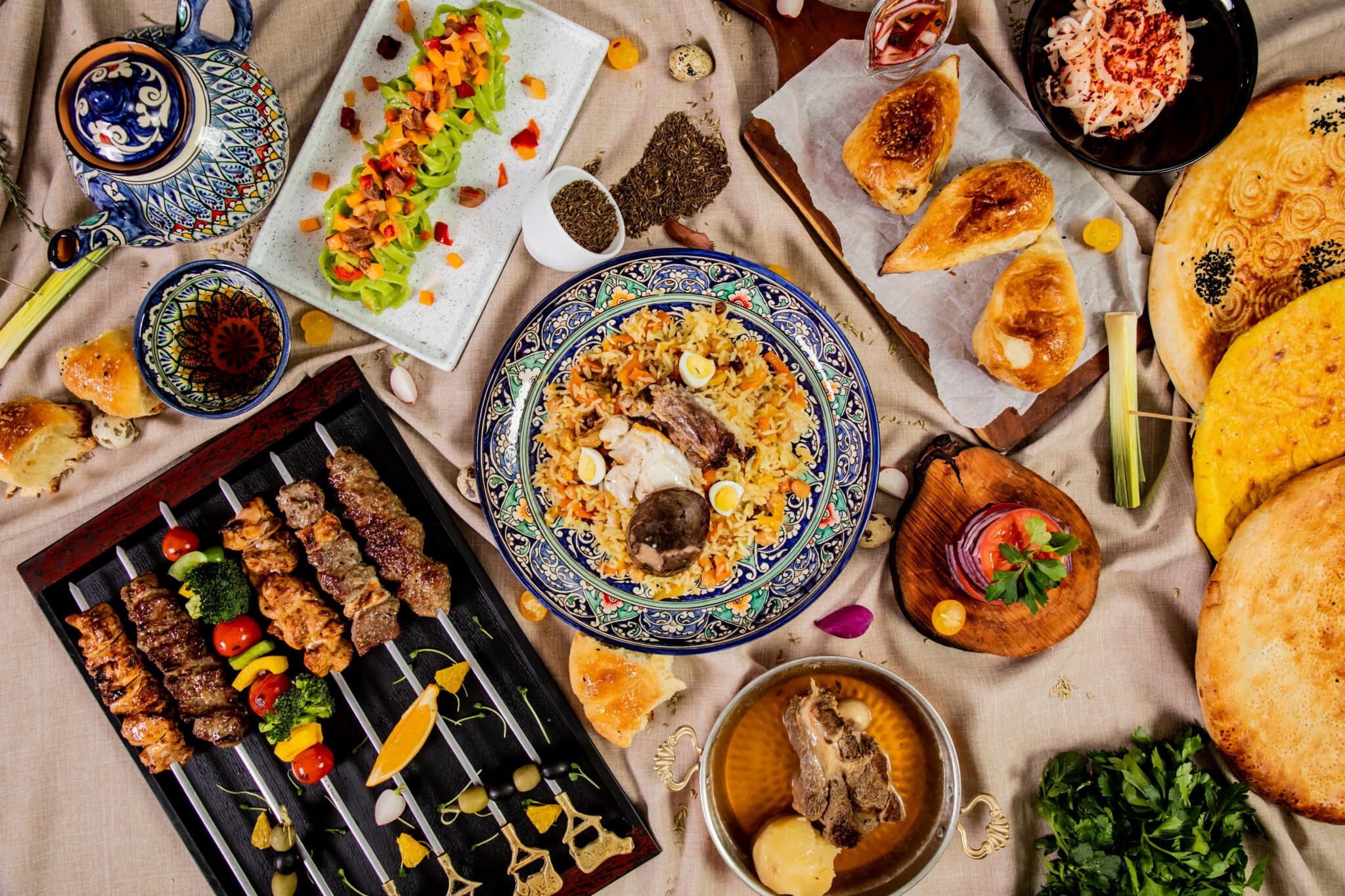Uzbek cuisine is steeped in the rich history and diverse influences of Central Asia. Uzbek food is a distinctive branch of the broader Turkic culinary family, enriched by Persian influence as well as by the hearty foods of Eurasia’s nomadic cultures. Slavic influence comes from Uzbekistan’s time as a part of the Russian and Soviet empires. The legendary Silk Road brought influences from even further afield – from China, India, and Europe.
Uzbek cooking is known for its robust use of meats, fats, and oils, reflecting the region’s preference for hearty and energy-dense meals. Vegetarians and vegans traveling to this part of the world are likely to struggle a bit, but plan ahead and generally accommodations can be made and options found. As for the meats used, mutton and beef are most common, with pork being rare in this historically Muslim country.
Whether you’re a student gearing up for a study abroad experience or a traveler planning an adventure through Uzbekistan, familiarizing yourself with the local cuisine is a step toward a richer cultural immersion and a more comfortable experience abroad overall. The following resource will introduce you to rich main dishes like plov, famous street foods like samsa, the simplicity of Uzbek salads, as well as seasonings and common ingredients to give you a wide perspective on a culinary land that is likely unlike any you have ever experienced.

Achichuk: (Salad) Achichuk is the national salad of Uzbekistan. You will find it nearly everywhere. It is a refreshing salad typically made with sliced tomatoes, onions, and cucumbers, seasoned with herbs, salt, and a splash of vinegar or lemon juice. Sometimes the cucumbers are omitted, leaving a much stronger taste that goes very well as a mix-in for plov.
Alcohol: (Beverage) While beer, wine, and spirits are produced in Uzbekistan, Uzbekistan has long been Muslim and thus has no domestic tradition of alcohol consumption and no national tipple.
Ayran: (Diary Product) Ayran is a popular, refreshing qatiq-based drink (see entry for qatiq below), especially favored during the warm months for its cooling properties. Made by diluting qatiq with water (and sometimes carbonated mineral water), and adding a pinch of salt, ayran is both thirst-quenching and beneficial for digestion.
Barberry: (Seasoning) Barberries, known as “ziravor” in Uzbek, add a tart, slightly sweet flavor to dishes. These tiny red berries are dried and ground into a spice that is particularly popular in plov, where they contribute a burst of color and a unique tangy taste.
Black Pepper: (Seasoning) Black pepper is a universal seasoning, and in Uzbek cuisine, it’s no exception. It’s used either ground or as whole peppercorns to add heat and enhance the flavor of meats, soups, and vegetable dishes.
Belyashi: (Bread) Belyashi are round pastries. They can be made “closed” or “open,” with a meat or vegetable filling exposed or not, and are fried until golden brown. The outer layer is both chewy and crispy, encasing a juicy, flavorful interior. They can also be made “empty,” with just the outer shell, which is then dusted with powdered sugar or served with honey and/or jams. Thus, this versatile food can serve as a quick meal, a street food snack, or a dessert.

Chak-chak: (Dessert) This sweet, sticky treat consists of small dough segments that are deep fried and then coated in a honey syrup. Chak-chak is claimed by many Turkic peoples, including the Uzbeks, as a national treat. Chak-chak is often served at weddings and major celebrations but is also an everyday treat.
Chuchvara: (Soup; Main Dish) Chuchvara are small, boiled dumplings filled with minced meat and spices, similar to ravioli. They can be served in a broth or with a dressing of butter, sour cream, or vinegar. They are a popular dish with children. Chuchvara can also be fried after steaming and before serving.
Cumin: (Seasoning) Cumin is a fundamental spice in Uzbek cuisine, adding a warm, earthy flavor to dishes like plov and kebabs. It’s used both in whole seed form and ground, bringing depth and complexity to the food.
Coriander: (Seasoning) Coriander seeds are another staple in Uzbek cooking, offering a lemony, slightly sweet taste. Ground coriander is often used in meat dishes, soups, and stews.
Corn: Corn was introduced to Uzbek cuisine under Khrushchev, who famously fell in love with it while touring the US. Today, corn is found in many Uzbek foods from corn porridge to various soups. Its most visible place, however, is being sold steamed on the cob as a street food.
Cottonseed Oil: Cotton production is central to Uzbekistan’s economy. Cotton seed oil is therefore plentiful in Uzbekistan and a staple in Uzbekistan’s kitchen, valued for its high smoke point and mild flavor that doesn’t overpower dishes. It is utilized in frying, baking, and as a salad dressing base. In Uzbek cuisine, it’s often the oil of choice for preparing traditional dishes like plov, where its subtle taste and cooking properties align well with the dish’s delicate balance of flavors and ingredients.
Dimlama: (Stew) Dimlama is a slow-cooked one-pot stew made with chunks of meat, potatoes, carrots, onions, and bell peppers. It is simple, filling, and comforting.
Dill: (Seasoning) Dill is a popular herb in Uzbek cooking, used to add a fresh, slightly anise-like flavor to dishes. It’s particularly common in soups, salads, and fish dishes, offering a bright green accent and a fragrant aroma.
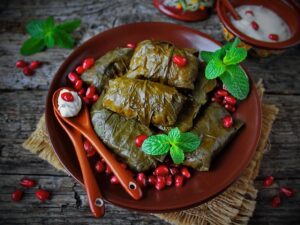
Dolma: (Main Dish; Side Dish) Dolma are common across much of Eurasia. These are leaves, usually grape or cabbage, rolled around a mixture of spiced minced meat, rice, and onions, are then steamed and eaten. Uzbekistan’s version is likely to feature cumin, coriander, and sometimes a hint of chili. Dolma is usually served with qatiq or sour cream dip, sometimes infused with garlic.
Dried Fruits: Dried fruits such as apricots, raisins, prunes, figs, and dates hold a special place in Uzbek cuisine, enjoyed both as standalone snacks and as ingredients that enhance various dishes such as pilafs, baked goods, and sweets. Uzbekistan’s native mirza melon are often sun-dried into a leathery snack with an earthy-sweet taste. Pick some up as a great souvineer to take home if you like it! Dried fruits are a staple in Uzbek tea culture, served alongside nuts, honey, and/or sweets.
Fried Lagman: (Main Course) Sometimes the noodles for lagman (see entry for lagman) are fried with its thick red sauce. The result is an even chewier, often oilier and more hearty dish, which is then most often topped with a fried egg.
Garlic: (Seasoning) Garlic is a cornerstone of Uzbek cuisine, used to infuse dishes with its pungent, robust flavor. It’s integral to marinades, sauces, and as a seasoning for meats and vegetables.
Halal (Food Preparation): Halal means “permissible” in Arabic and refers to food and practices that are allowed under Islamic law. In Uzbekistan, with its significant Muslim population, halal foods are the norm. Meat must be sourced from animals that have been slaughtered in a specific, humane way while reciting a blessing. This practice reflects a deep respect for life and gratitude for the sustenance provided. Halal also requires the avoidance of alcohol, pork, and blood and generally emphasizes cleanliness, health, and ethical consumption.
Halva: (Dessert) While the better-known “standard halva” is widely available in Uzbekistan, Uzbek halva simplifies the recipe to produce something similar to halva using flour, butter, and sugar, and enriched with nuts or seeds. The ingredients are cooked together until they form a dense, sweet paste that’s then cooled and cut into slices or blocks. Halva is revered for its smooth texture and nutty flavor, serving as a customary treat during holidays and family gatherings.
Haravats: (Side Dish) Haravats is actually of Armenian origin, where the name actually means “barbecue.” This name is applied because the dish starts with eggplant, onion, tomato, and peppers all roasted over hot coals. These are mashed together into a thick mixture that can then be eaten plain or, better yet, as a spread on non bread.
Honim: (Main Dish) Honim starts with a filling that combines minced lamb and various vegetables like onions, tomatoes, potatoes, capsicum, carrots, and cabbage. Seasoned with spices like coriander and cumin, the mixture is wrapped in a thin, delicate dough, steamed until tender, and typically served with sour cream or sometimes in a thick tomato sauce.
Kazan: (Food Preparation) This cooking vessel is akin to a large, thick wok or perhaps very wide dutch oven. Made typically of cast iron, it has a cover and is used over direct heat or an open flame. It is most famously used for plov, but is also used for fried lagman, stews, deep frying belyashi, making kazan kabob, and more.
Kazan Kabob: (Main Dish) Kazan Kabob is a hearty dish made from chunks of meat, usually lamb or beef, potatoes, and onions, all cooked together in a kazan, which leaves the meat exceptionally tender and flavorful.
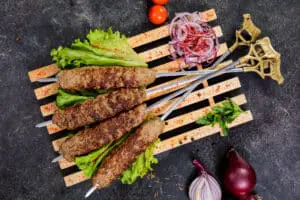
Korean Carrot Salad: (Salad) This salad was invented by the Korean diaspora who were deported by Stalin to Uzbekistan. It features julienned carrots marinated in a mixture of vinegar, oil, garlic, and spices. The result is a spicy, sweet-and-sour side dish that adds a colorful and flavorful element to the meal. It mixes particularly well with plov.
Kaurdak: (Main Dish) The essential Central Asian meat and potatoes meal, this dish also typically features onions, and sometimes bell peppers or carrots sautéed with cumin, garlic, and black pepper. Kaurdak is known for its tender meat and flavorful, slightly crispy vegetables, offering a satisfying texture contrast.
Khvorost: (Desert) Khvorost is deep fried pastry dough made of flour, water, egg, and salt. These are then dusted with sugar or drizzled with honey and served with tea. Enjoyed widely within Central Asian and Slavic cultures.
Lagman: (Soup; Main Course) Lagman is a noodle soup or a pasta dish. Rich and savory, it features vegetables (like bell peppers, tomatoes, and onions) and tender chunks of beef or lamb in either a thick sauce or flavorful broth. If you catch eat this in Central Asia, you may be treated to long, chewy, hand-pulled noodles, which are most traditional with this dish.
Manti: (Main Dish) Manti are steamed dumplings filled with spiced meat (typically lamb or beef) and onions. They are often topped with a dollop of sour cream or a garlic-yogurt sauce. Manti can also be fried after steaming. You can sometimes find pumpkin and potato manti that are vegetarian friendly.
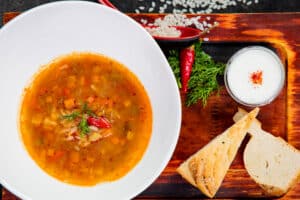
Mastava: (Soup) Combining beef or mutton with vegetables like onions, carrots, and potatoes, this soup is enriched with rice for texture. Seasoned with cumin and garnished with coriander or dill, it offers warmth and flavor. Serve with a touch of sour cream or qatiq (see entry for qatiq) and optional ground pepper for an extra kick.
Melons: In Uzbekistan, melons grow exceptionally well in the hot sun. They are staples of the Uzbek diet, a major export, and a source of national pride. The two major varieties are watermelons and mirza melons, sometimes called “torpedos” for their elongated shape. Mirza melons are pale yellow and very sweet and juicy. There are also many regional varieties to try. Gurvak is Khorezmian honey melon. Qariqiz is native to the Karakalpakastan region and its name means old lady, due to its wrinkly skin. Jizzakh melons, native to a region of the same name, can grow up to about a meter in length. Definitely try the mellon while in Uzbekistan!
Mohora: (Soup) Mohora is a festive Uzbek soup, that features rib meat simmered with chickpeas. Vegetables, cumin, and bay leaves are then added with fried onion and tomato, creating a rich and very savory soup.
Moshhurda: (Soup) Moshhurda is an easy-to-make Uzbek soup and popular with children. It combines minced meat, mung beans, rice, onions, and potatoes in a flavorful broth, seasoned with coriander and pepper.
Navat: Navat is literally just crystallized sugar. It forms beautiful, yellowish shapes and is usually sold on strings or sticks that can make an excellent souvineer to take home. It is often enjoyed, especially by children, as a treat consumed like a lollypop or hard candy. It can also be dipped into tea to sweeten and flavor the beverage.
Nishalda: (Dessert) Nishalda is a unique Uzbek whipped dessert and a delicacy. Traditionally made for wedding ceremonies, it’s created by whisking together egg whites and sugar, often with the addition of gelatin for stability, until it reaches a light, fluffy consistency. Infused with rose water or lemon juice for added flavor, it’s a delicate treat.
Nokhat Shurak: (Soup) This soup is centered around chickpeas (nokhat) which are soaked and then simmered with meat (lamb or beef), various vegetables like onions, tomatoes, carrots, and potatoes, and is seasoned with a blend of spices that might include cumin, coriander, and paprika. Nokhat Shurak can also feature noodles or rice and is commonly garnished with fresh herbs like dill or parsley before serving.
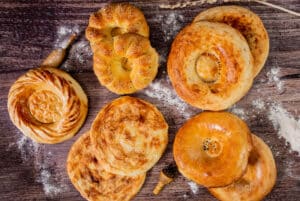
Non: (Bread) Non is Uzbekistan’s national bread. Baked in a tandoor oven, it’s a yeasted or sour dough bread baked in a disc-like shape and usually decorated with a metal stamp that marks it with tiny holes that are then extra-crunchy to contrast with the softer interior. The tandoor is often wood-fired, giving the bread a smokey flavor. As it is a source of pride, there is some competition among various regions as to who has the best non and there are regional variations. For instance, Tashkent non is specifically fluffy and light while Samarkand non is denser and crumblier. No matter what non you are eating in which region, however, this bread will accompany nearly every meal and tea break.
Naryn: (Main Dish) Naryn is most often regarded as a Kyrgyz dish, but is also widely popular in Uzbekistan. Like lagman, this is a noodle dish that can be served as a soup or a pasta dish. If not paired with broth as a soup, it will essentially be a pile of noodles, fried onions, and finely chopped meat, with horse sausage being the most traditional.
Pakhlava: (Dessert) Pakhlava in Uzbekistan tends to be thicker and drier than baklavas found further west. While walnuts, honey, and/or syrup still feature prominently, it is often made with a simpler dough rather than layered phyllo, and spiced with cardamom or cinnamon.

Plov: (Main Dish) Plov is a staple of Uzbek cuisine, made with rice, carrots, onions, and meat (usually lamb or beef), and seasoned with spices like cumin and coriander. Cooked in a kazan, which is essentially a thick, wok-shaped cast-iron pan, this dish offers a flavorful blend of tender meat and aromatic rice. It’s a symbol of hospitality, commonly served at various social events. It’s also a symbol of regional pride, which most Uzbek regions having a variation that they call their own. Variations can involve the inclusion of horse sausage, hardboiled eggs, chickpeas, dried fruits, nuts, lamb’s tail fat, and more.
Pomegranates: (Seasoning, Ingredient, Beverage) Pomegranates are often used in Uzbek cusine to both dress and flavor foods. They are often mixed into plov, sprinkled on main dishes, feature heavily in salads, and pomegranate juice is commonly drunk. Pomegranates are sweet and tart and are believed to boost heart health and aid digestion.
Qatiq: (Dairy Product) Qatiq is a natural yogurt drink that is particularly valued for ability to help maintain digestive health. Milk is first boiled and then cooled to the right temperature. Older qatiq is then added and the milk is left sealed in a warm place to ferment into a new round of creamy Uzbek qatiq. The result is drunk straight or used in salads or soups.
Qatiqli: (Salad) This very simple salad consists of sliced radishes and various greens with qatiq poured over the top. The result is something that almost resembles a soup and is often paired with heavier dishes such as plov and samsa (it makes an excellent dipping sauce for the latter).
Qatlama: (Pastry) Qatlama in Uzbek refers to layering. Within the layers of this pastry, one can often find savory ingredients like potatoes, meat, or greens, but it can also be sweetened with pumpkin or fruit fillings. The dough is thin and crispy, providing a satisfying texture contrast. Qatlama is usually cooked like a pancake in a dry pan. However, it can also be cooked in an oven – in which case, it is referred to qatlama patyr.
Qazi: (Main Dish) Qazi is Uzbek sausage, made from minced meat (horse, beef, or lamb) mixed with fat, garlic, and a robust mix of spices, including cumin, coriander, and black pepper, all encased in the animal’s intestines. The sausage is then boiled and then dried or smoked, which intensifies its flavor and greatly increases its shelf life. Qazi is typically sliced and served as part of a main course or as an appetizer, often accompanied by bread and fresh vegetables or greens.
Qiyma Kabobs: (Main Dish) These kabobs are made of meat (usually lamb or beef) minced with onions and spices, and then grilled over hot coals. These are known for being particularly flavorful as the mincing process allows a lot of herbs and spices to be added – often including paprika, parsley, cumin, coriander, pepper flakes, and more. “Kofta” in Turkic languages means “cutlet.”
Qurt: (Dairy Product) Qurt is a hardened dairy product celebrated for its durability and nutritional value. It is made by heavily salting suzma (strained fermented milk), shaping it into balls, and allowing it to dry. It can be additionally flavored with basil, red pepper, mint, or other flavors. It travels well, and can be eaten straight, dropped into water to make an instant beverage, or used in soups. It offers a rich source of proteins, vitamins, and minerals that can keep for weeks if not months if stored properly.
Radish: Uzbekistan has a native radish that is large and green and has a rather overpowering smell and taste that is usually tamed by slicing and soaking it in water or vinegar. Also common are red radishes and Asian daikon radishes. Radishes feature prominently in Uzbek salads, which often feature strong, crisp flavors that pair well with meat.
Saffron: (Seasoning) Saffron, one of the most precious spices in the world, is used sparingly in Uzbek cuisine to add color and a subtle floral aroma to dishes like plov and various sweets.
Salads: (Side Dish) Uzbekistan is not known for salads. Uzbek salads are usually very simple and small. Many will have only two ingredients dressed in something simple like a little oil and/or vinegar. Although there are exceptions (especially in Slavic-influenced salads dressed with mayonnaise), salads are often meant to be pallet cleansers to accompany meat-and-oil heavy meals. Vegetable pairings may seem unusual – and are often heavy on strong flavors like radish, onion, and pomegranate. Cabbage – pickled, fermented, or fresh – is also a common ingredient. Raw onion or greens placed are plate are meant to be eaten with the meal.
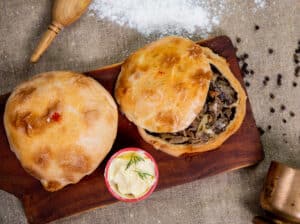
Samsa: (Main Dish) Samsa is a popular Uzbek pastry. Minced meat (lamb or beef), onions, and spices are encased in a flaky dough. Baked in a tandoor oven, it has a crispy exterior with a juicy, flavorful interior. Served as a snack or appetizer, samsa is cherished for its delightful taste and texture. You can sometimes find pumpkin and potato samsa that are vegetarian friendly.
Shirguruch: (Main Dish) This is poridge made from milk and rice cooked together until the rice is tender and creamy. Seasoned with salt, often sweetened with sugar or honey, and served with a pat of butter, shirguruch is on the menu of many hotel breakfasts and is a perfect way to start the day like a local with both comfort and sustained energy. There are variations as well. For instance, shirqovoq will add grated pumpkin, infusing the meal with a subtle sweetness and a vibrant color while also boosts its nutritional value.
Shivit Oshi: (Main Dish) Shivit Oshi is a distinctive and colorful version of lagman. Traditional to the Uzbek city of Khiva, the noodles are infused with pureed dill, giving them a bright green hue. They are then served topped with meat (lamb or beef) and vegetables that have stewed in herbs and spices. It is dressed with qatiq before being served.
Shurpa: (Soup) Shurpa is a traditional Uzbek soup made with chunks of beef or lamb, potatoes, carrots, and other vegetables, simmered in a flavorful broth. The simplicity of the dish, combined with a range of herbs and spices, makes this an excellent comfort food.
Shirchoy: (Beverage) Shirchoy is black tea mixed with milk and usually served with both salt and sugar added. This most commonly drunk at breakfast.
Sumac: (Seasoning) Sumac, with its tangy and slightly sour flavor, is used to season salads, meats, and rice dishes. It’s especially favored for its ability to add a vibrant acidity without overpowering the dish.
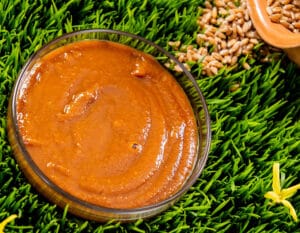
Sumalak: (Dessert) Sumalak is a special Uzbek dish, typically made only once a year, in very large quantities, for the Nowruz (Persian New Year) celebrations. Germinated wheat is simmered for many hours with flour and water, while people take turns stirring, making it a communal cooking experience. The result is a rich, sweet paste, enjoyed for its hearty texture and symbolic significance of renewal and health.
Suzma: (Dairy Product) Suzma starts with qatiq. Full-fat qatiq is usually used, as the point is to strain the yogurt-like substance to obtain creamy, versatile cheese. Suzma can be enjoyed on its own, seasoned with herbs or spices, or used as an ingredient in soups, salads, and desserts.
Tandir Oven: (Food Preparation) This traditional clay oven was developed in India but is now widespread throughout much of Eurasia. Fired with wood or charcoal, it achieves high temperatures that are ideal for baking breads like non or cooking meat dishes such as samsa and tandir kabob. The oven’s cylindrical design allows for even heat distribution and imparts a smoky flavor and a crisp exterior to the food while retaining moisture and tenderness inside.
Tandir Kabob: (Main Dish) Tandir Kabob is marinated meat slow-cooked in a tandir (clay oven). This cooking method gives the meat a distinctive smoky flavor and a tender, melt-in-your-mouth texture.
Tashkent: (Salad) Originating from Tashkent, this salad features boiled beef or tongue, cut into strips, and paired with equally long strips of turnip, providing a unique crunch. The addition of onions and spring onions introduces a sharp, fresh flavor. The salad is dressed with mayonnaise or sour cream and seasoned with salt.
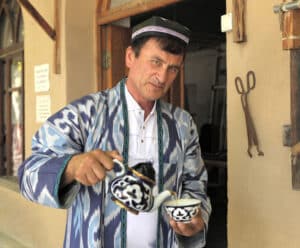
Tea: (Beverage) Tea is the national drink of Uzbekistan. Drinking tea on cold days can warm you up, and surprisingly, drinking tea on hot days can make you feel cooler. Traditionally served in a “piala,” a small, handle-less cup, tea accompanies meals and is believed to aid in digestion. It is also a fixture of Uzbekistan’s hospitality traditions.
Tukhum Barak: (Main Dish) Tukhum Barak consists of delicate dough pockets filled with seasoned raw egg mixture that then cooks when the pocket is boiled or steamed. It is often served with a dollop of sour cream or a light butter sauce. It’s a simple and comforting dish.
Wedding Plov: (Main Dish) There are many variants of plov in Uzbekistan, but wedding plov is especially renowned. It features raisins and often other dried fruits mixed into the hearty blend of rice, onions, meat, and carrots, resulting in a dish that’s both sweet and savory, ideal for festive occasions.
Yupka: (Bread) Yupka is a thin, unleavened bread, akin to a tortilla or lavash, cooked on a dry skillet or directly over a flame. It serves as a versatile bread, used for wraps, layered in dishes, or enjoyed as an accompaniment to main courses.
You’ll Also Love
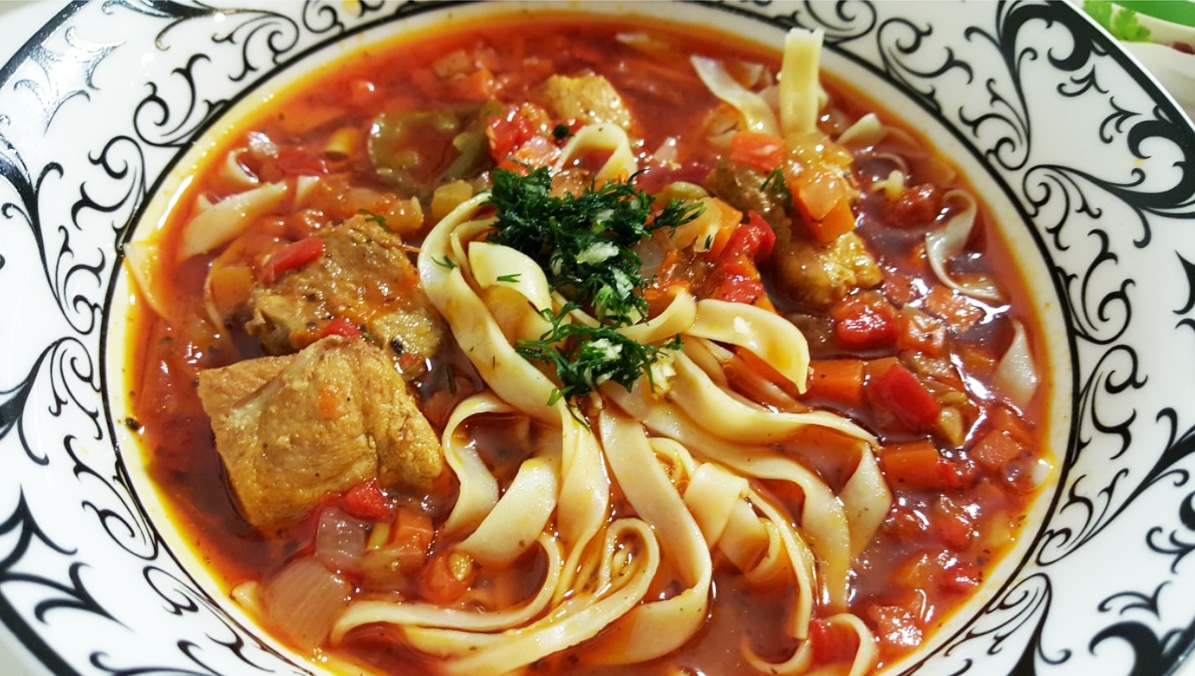
Lagman: The Noodles of the Silk Road
Lagman is a dish that is very common in Central Asia, China, and many Middle Eastern countries. It can also be found in Russia and the Caucasus and is a popular dish among the Crimean Tatars. The basic recipe, which combines noodles with meat, has hundreds of variations. In Uzbekistan, the dish tends be a […]
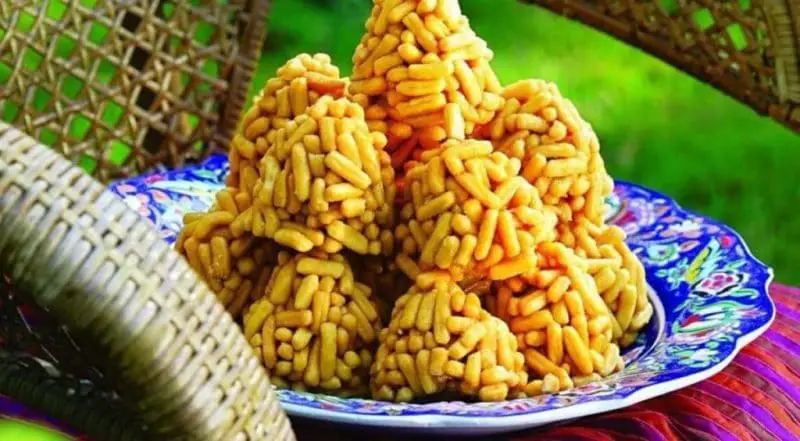
Chak-chak: A Glorious and Celebratory Fried Honey Cake
Chak-chak (Чак-чак) (chak-chak) is a dessert food made from deep-fried dough drenched in a hot honey syrup and formed into a certain shape, most commonly a mound or pyramid. It is popular all over the former Soviet Union. In Russia, chak-chak is especially associated with the Tatar and Bashkortostan republics, where it is considered a […]
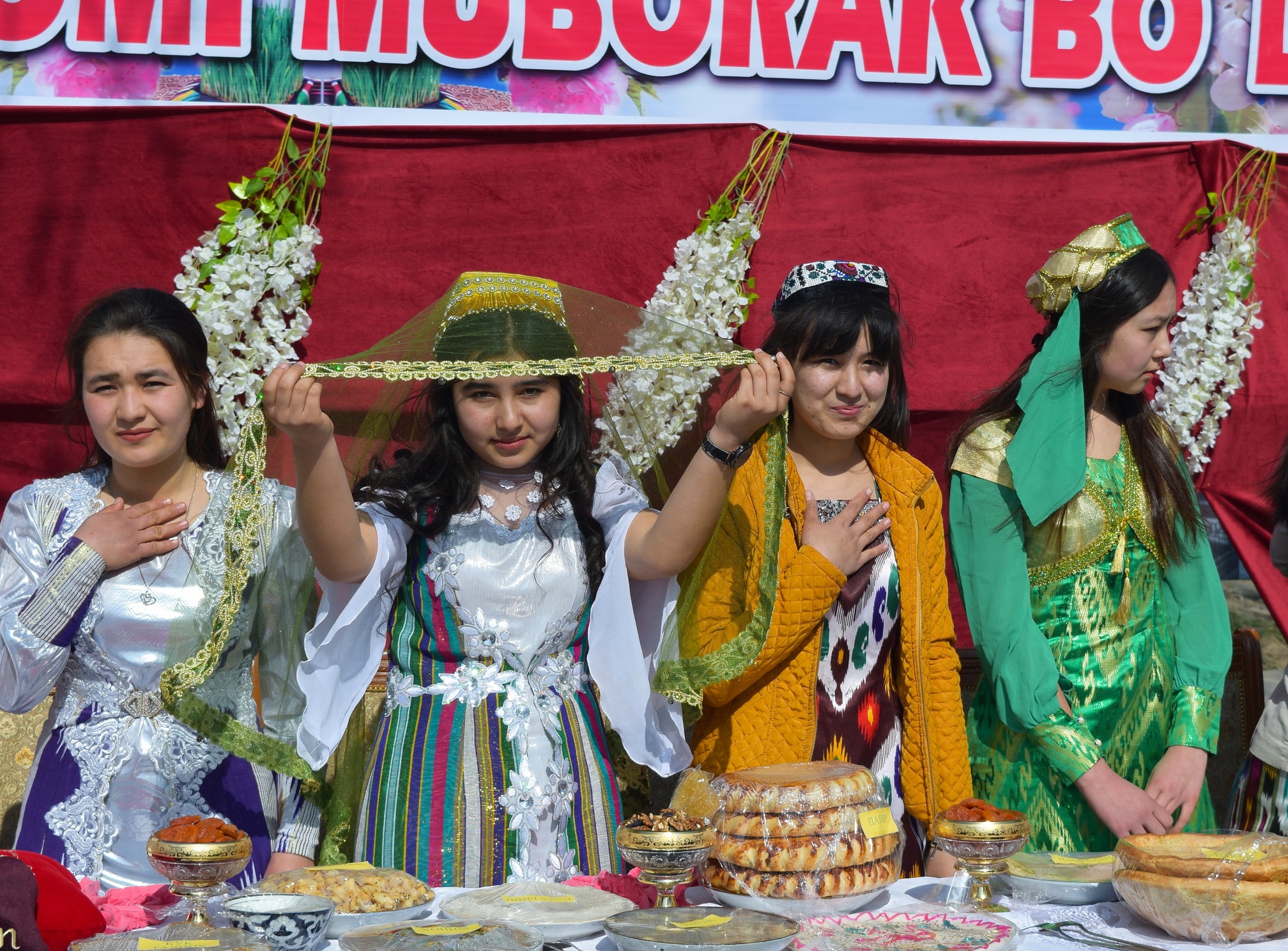
Navruz, Nooruz, Nowruz: The Ancient Spring New Year of Central Asia
Navruz is a spring solstice celebration that marks the beginning of the New Year according to the traditional Persian calendar. It has been a beloved holiday for some 3,000 years, surviving cultural change caused by centuries of tumultuous history. It was once celebrated on the vernal equinox but is now celebrated on the set date […]
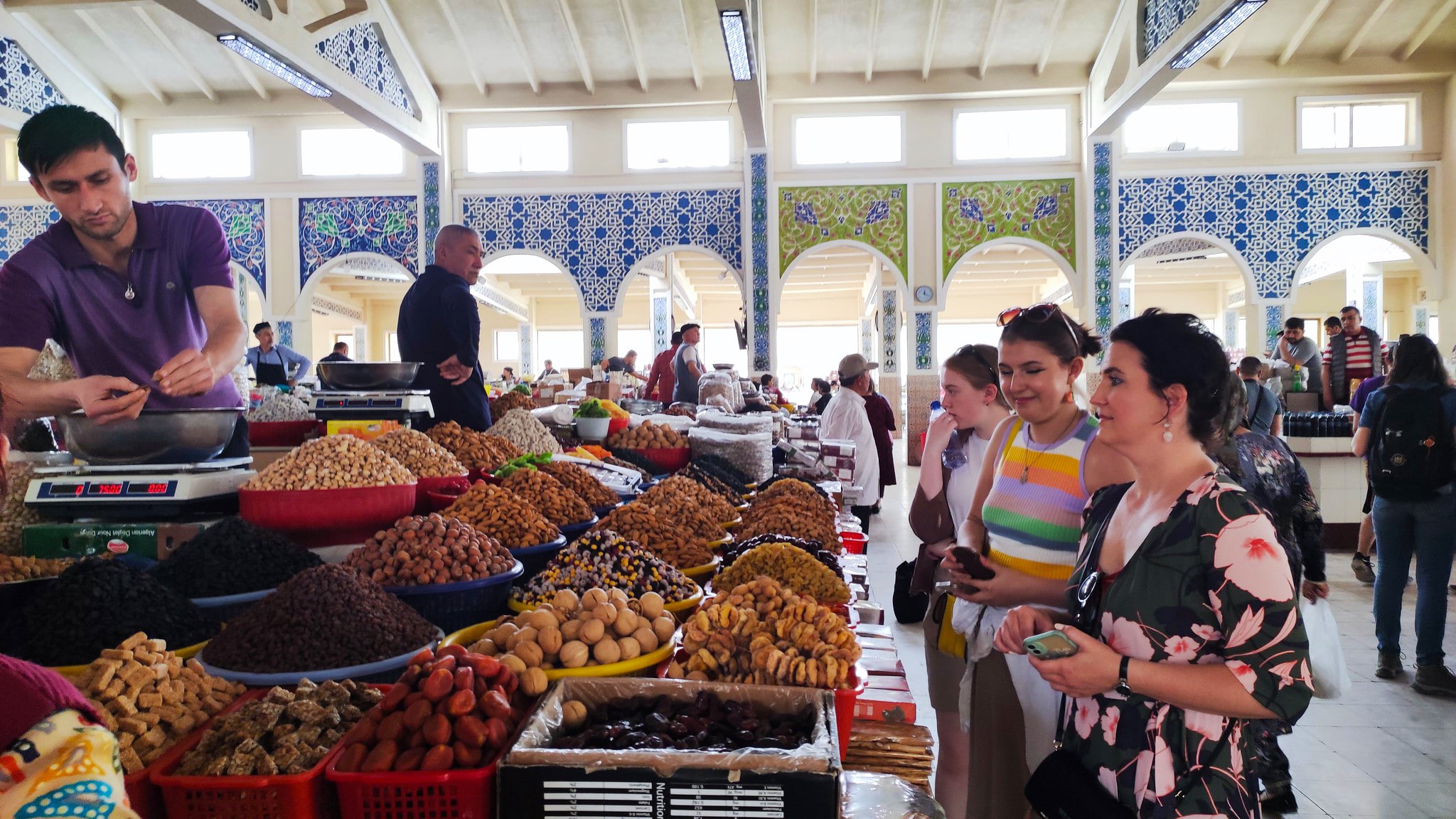
The Talking Uzbek Phrasebook
The Talking Phrasebook Series presents useful phrases and words in side-by-side translation and with audio files specifically geared to help students work on listening skills and pronunciation. Below, you will find several useful phrases and words. To the left is the English and to the far right is the Uzbek translation. Uzbek is currently transitioning […]
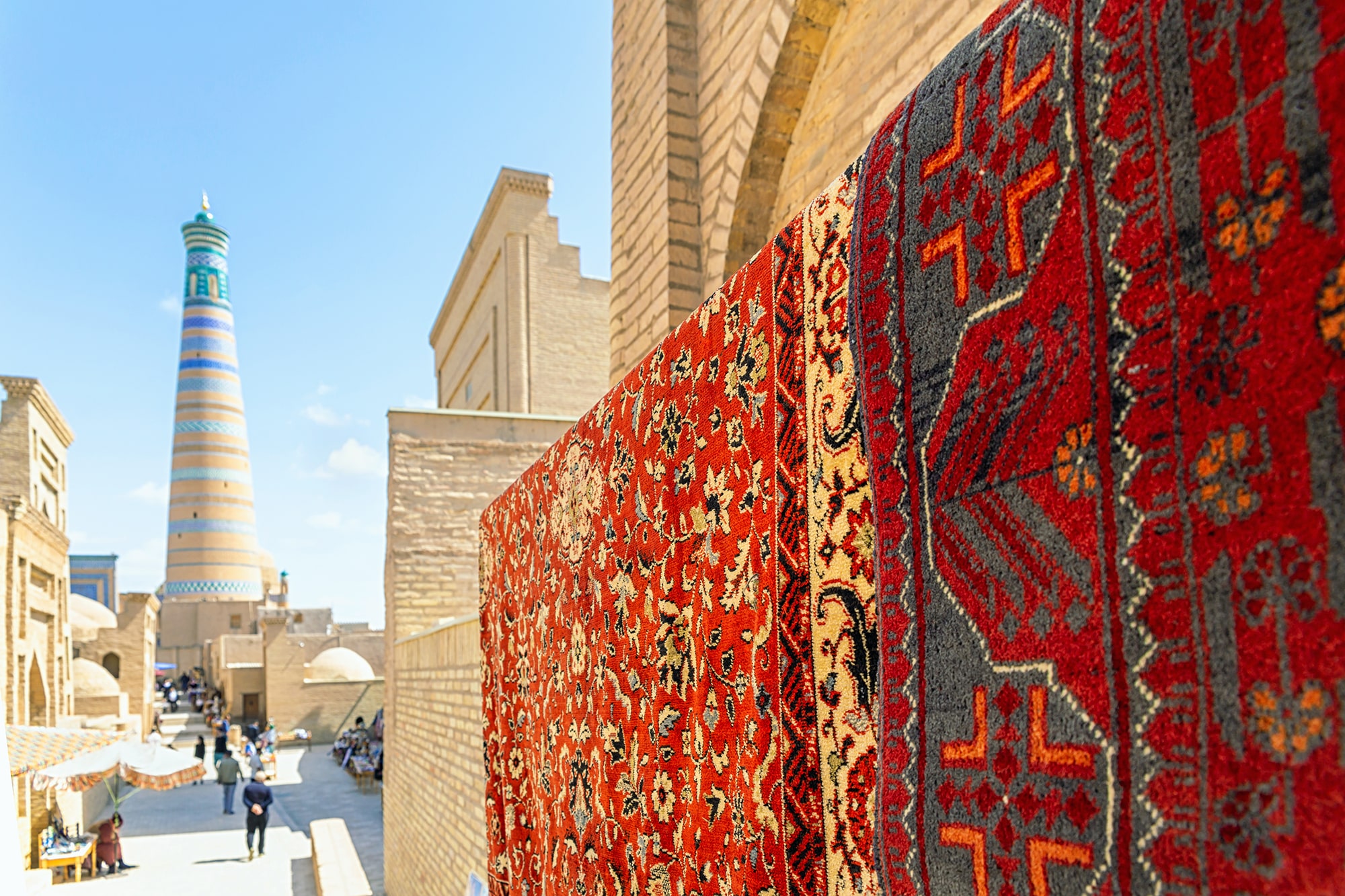
Knots of Culture: Central Asia’s Carpet Weaving Heritage
Central Asia’s rich tradition of carpet weaving reflects the region’s history, culture, and identity. From the ancient nomads of the Pazyryk Valley to the artisans of Kyrgyz yurts and the urban weavers of Samarkand, carpets have long served both practical and symbolic functions. Their materials, techniques, and motifs reflect centuries of interaction between nomadic and […]

